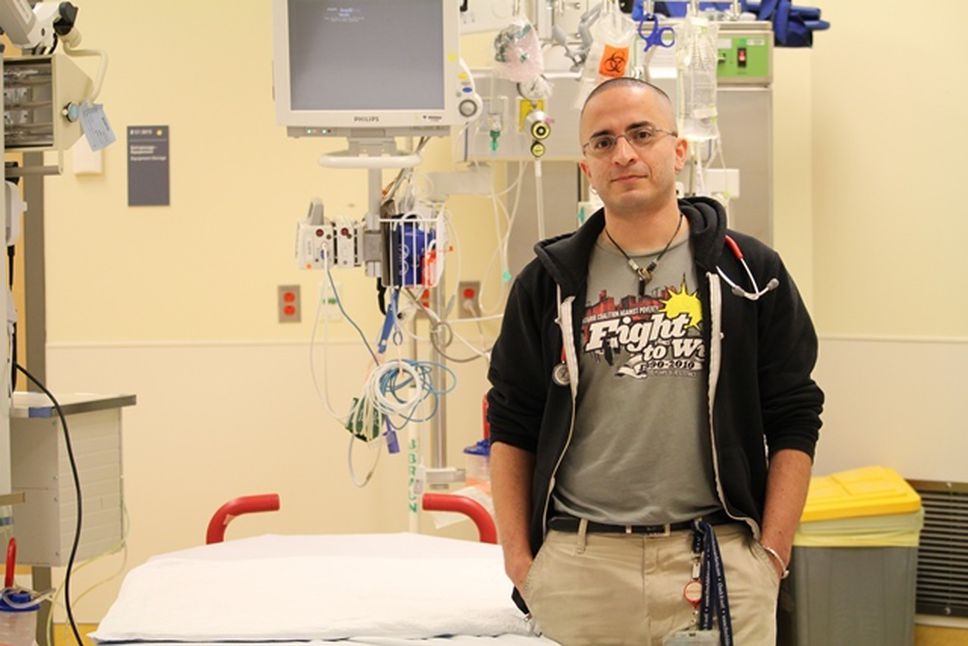Dr. Samir Shaheen-Hussain: A history of Canada’s medical colonialism against Indigenous people and why it needs to be recognized as genocide

This op-ed by Dr. Samir Shaheen-Hussain, author of Fighting for a Hand to Hold: Confronting Medical Colonialism against Indigenous Children in Canada, was originally published in the Toronto Star on May 5, 2021.
On April 1 — a month our Canadian government recognizes as Genocide Remembrance, Condemnation and Prevention Month — Canada’s minister of Diversity and Inclusion and Youth, Bardish Chagger, issued a statement reminding Canadians that “it is our collective responsibility to honour and give voice to the victims and survivors of genocide by learning about these horrific events and ensuring we preserve the truth of this history” to confront “prejudice, hate as well as all forms of racism and discrimination.”
In 2015, the year that the House of Commons designated this month, the Truth and Reconciliation Commission found that Canada’s residential schools amounted to cultural genocide. In 2019, the National Inquiry into Missing and Murdered Indigenous Women and Girls concluded that the genocide of Indigenous Peoples has happened in Canada.
Yet, in Chagger’s list of historical examples, she omitted to mention the very genocide that Canada is directly responsible for: that of Indigenous people on these lands.

The United Nations’ Convention on the Prevention and Punishment of the Crime of Genocide defines genocide as any one of five acts committed with the “intent to destroy, in whole or in part, a national, ethnical, racial or religious group.”
The COVID-19 pandemic has exposed deep-rooted inequalities in health outcomes. For example, Indigenous communities in Toronto are hospitalized more than three times the rate of the general population in the city. This jarring statistic provides a lens to understand the role that the health care system has played, and continues to play, through “medical colonialism,” a culture or ideology, rooted in systemic anti-Indigenous racism, that uses medical practices and policies to establish, maintain, and/or advance a genocidal colonial project.
The violence historically inflicted by the Canadian medical establishment on Indigenous peoples, with physicians often leading the charge using public funds, applies to all five acts outlined in the UN Genocide Convention. Horrifyingly, Indigenous children have specifically been targeted over time, with examples of this systemic discrimination abound.
In the early twentieth century, the medical profession did not intervene in any meaningful way to prevent children from contracting and transmitting tuberculosis in government-funded, church-run residential schools, thereby inflicting preventable suffering, and also resulting in the deaths of hundreds, if not thousands, of children.
In the 1940s, with the full support of the Department of Indian Affairs and the Indian Health Service, Canadian physicians and medical scientists exploited the imposed conditions of starvation in six residential schools across the country to study the effects of malnutrition through a series of experiments based on the diets of almost one thousand Indigenous children. The consequences of starvation and malnutrition continue to impact on the health of many survivors to this day, including through chronic illnesses and transgenerational harms.
Between the 1920s and the 1980s, a racially segregated system of Indian Hospitals was administered by various governmental entities. At its peak in the early 1960s, it had a total capacity of over two thousand beds in more than twenty institutions throughout the country. The experiments, abuses and assaults suffered by Indigenous children in these hospitals have contributed to a deep-seated sense of distrust of the Canadian health care system.
Over the last century, through both formal eugenics-informed legislation in certain provinces that was in place until the early 1970s and de facto practices that have continued to the present day, thousands of Indigenous women, including girls, have been coercively sterilized, forced to give up the ability to bear children.
Between the 1940s and the 1960s, federal medical evacuation policies resulted in the forced large-scale transfer of Inuit, including children, from northern communities to southern hospitals for tuberculosis treatment. From the 1950s to the 1970s, medevac airlift practices in Quebec resulted in children from different Indigenous nations (Atikamekw, Anishnaabe, Innu) being literally disappeared into and by the health care system. In both instances, some children never returned home and too many families still don’t know what happened to them.
These health care practices, policies, and laws have always been operational within the larger colonial system in Canada, structured by the Indian Act and other similar legislation, with the primary goal of destroying Indigenous people and claiming their lands. The egregious examples cited above, along with so many others in Canadian health care, unequivocally demonstrate medical colonialism’s role in the genocide of Indigenous Peoples, including by targeting a vulnerable population of any society: children. It should not be surprising that class-action lawsuits have been launched amid other initiatives seeking redress in several of these instances.
In the concluding paragraph of her statement, minister Chagger encourages Canadians to “remember and honour the courage and resilience of the survivors of genocides and their descendants.” It’s time for the Canadian government to take its own advice. If it is genuinely committed to “reconciliation,” then a symbolic, albeit important, first step would be recognizing the genocide it has committed against Indigenous people. There can be no reconciliation without reparations and restitution.
Leave a Reply